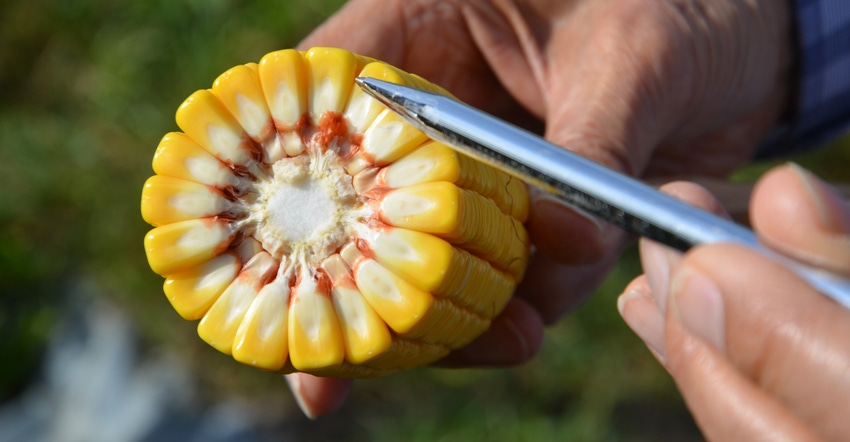
There is theory and there is research. If something is proved through research, it’s more likely to hold true. Bob Nielsen and Peter Thomison proved in research plots some two decades ago that if the same corn hybrids were planted a month behind schedule, they would mature using fewer growing degree days than if they were planted at a normal date.
Nielsen, a Purdue University Extension corn specialist, and Thomison, his Ohio State University counterpart, developed formulas to determine how many fewer GDDs would be needed, depending on planting date. In most cases, it amounted to a reduction of 200 or more GDDs to reach black layer. Several people relied on that information in the spring of 2019 when advising farmers.
The Purdue University Corn and Soybean Field Guide devotes two pages to the concept and how to use it. Agronomists and farmers have found it useful in past seasons. In most cases, before 2019, people who planted corn late due to planting delays found that the concept held up. The same hybrid planted a month later required about 200 fewer GDDs to reach maturity.
Outlier year?
Then came 2019. Nielsen started receiving reports in early September that hybrids planted late didn’t seem to be on track to mature, or reach black layer, by the date indicated by subtracting GDDs from the amount normally required for the specific hybrid.
“When I began checking our own plots and on-farm trials, I found the same thing,” Nielsen reports. “In one case, my calculations based on later planting date showed the hybrid should be reaching black layer by mid-September, but it didn’t. Instead, it matured at the date when the normal amount of GDDs accumulated. In this case, that was early October.”
Most hybrids still matured before a killing freeze, because it occurred at a normal to slightly later-than-normal time in most areas. But there was little to no good weather left for drying in the field, Nielsen explains. That’s partially why lots of corn was harvested in the 20% to 24% range and dried.
“We don’t know for sure why the pattern didn’t hold this year,” Nielsen says. “One theory is that since September was considerably warmer than normal, plants continued growing, completing photosynthesis and producing sucrose. This may have prevented them from maturing earlier as late-planted hybrids normally do.”
On the flip side, it may also explain why corn yields tended to be better than people expected.
The future?
So, should you ignore those two pages in the Purdue guide? No, Nielsen emphasizes. The concept was proved by research and held true — until 2019. It’s likely that the unusual flow of the 2019 season produced the unusual maturity pattern. The odds of an exact repeat of 2019 anytime soon are low.
Nielsen still believes the concept is a valuable tool. However, he adds a caveat.
“It might be time for someone to repeat that work and see if anything has changed,” he notes. “Genetics are different today than when the research was done.
“It’s always possible that today’s genetics might not react the same way. Until then, however, I believe the concept is still valid for planning purposes.”
About the Author(s)
You May Also Like




